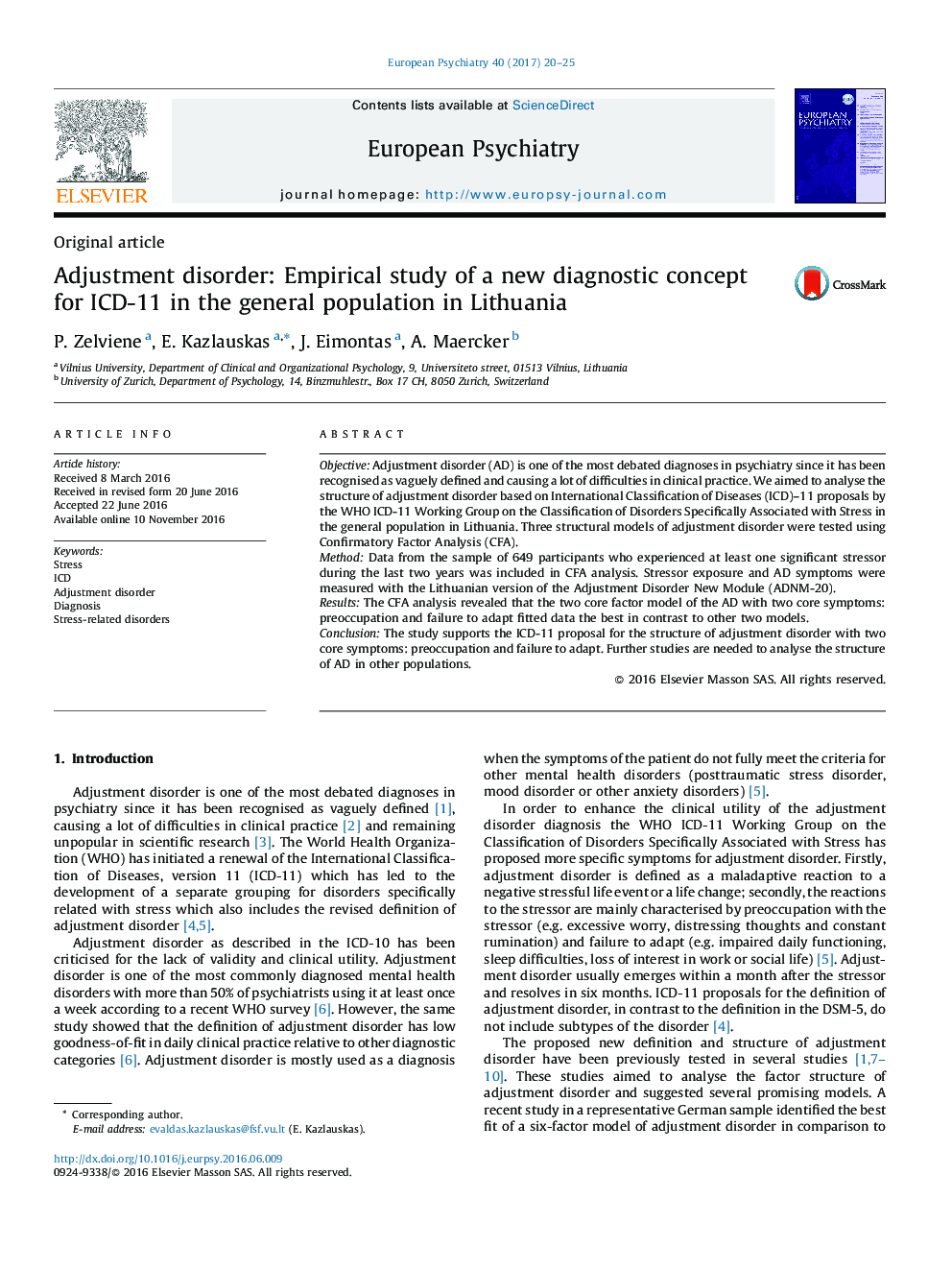| Article ID | Journal | Published Year | Pages | File Type |
|---|---|---|---|---|
| 5721591 | European Psychiatry | 2017 | 6 Pages |
ObjectiveAdjustment disorder (AD) is one of the most debated diagnoses in psychiatry since it has been recognised as vaguely defined and causing a lot of difficulties in clinical practice. We aimed to analyse the structure of adjustment disorder based on International Classification of Diseases (ICD)-11 proposals by the WHO ICD-11 Working Group on the Classification of Disorders Specifically Associated with Stress in the general population in Lithuania. Three structural models of adjustment disorder were tested using Confirmatory Factor Analysis (CFA).MethodData from the sample of 649Â participants who experienced at least one significant stressor during the last two years was included in CFA analysis. Stressor exposure and AD symptoms were measured with the Lithuanian version of the Adjustment Disorder New Module (ADNM-20).ResultsThe CFA analysis revealed that the two core factor model of the AD with two core symptoms: preoccupation and failure to adapt fitted data the best in contrast to other two models.ConclusionThe study supports the ICD-11 proposal for the structure of adjustment disorder with two core symptoms: preoccupation and failure to adapt. Further studies are needed to analyse the structure of AD in other populations.
